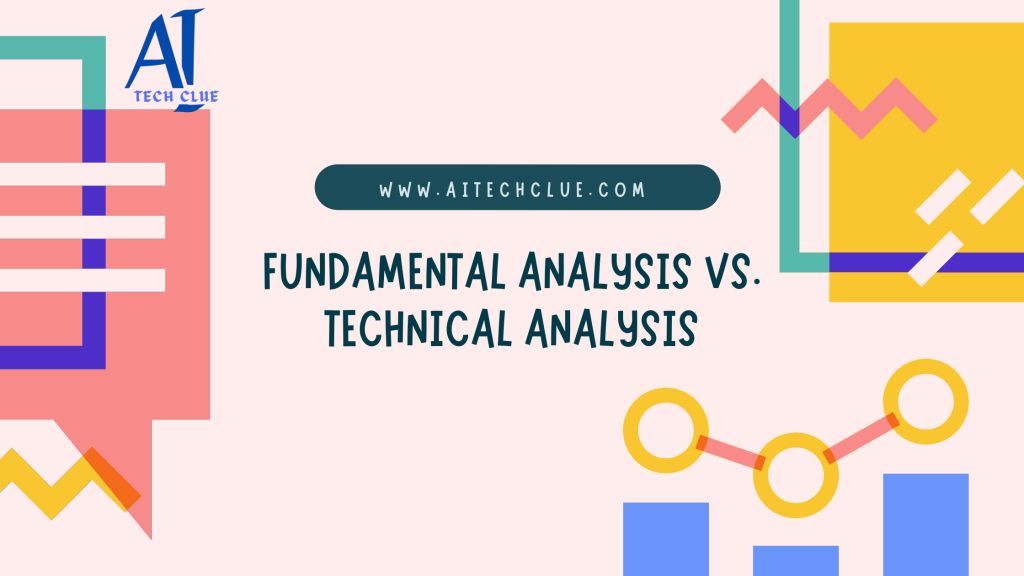Investing in the stock market can seem overwhelming with all the strategies available. Two of the most popular approaches that often dominate discussions are fundamental analysis and technical analysis. While both methods aim to provide investors with the best possible insights for making informed decisions, they differ significantly in their principles and execution. So, which one is right for you? This article will help you understand the key differences, benefits, and limitations of both approaches.
If you want to read same article in hindi click here
Which One to Use?
When it comes to investing, two popular strategies often spark debate among investors: fundamental analysis and technical analysis. Whether you’re a long-term investor or a day trader, understanding these methods can significantly impact your investment choices and portfolio growth. But which one should you use? Let’s break it down.

What Is Fundamental Analysis?
Fundamental analysis is an approach used to evaluate a stock’s intrinsic value. This method focuses on analyzing a company’s financial health, management quality, and overall economic conditions to determine whether a stock is undervalued or overvalued.
Key Components of Fundamental Analysis
- Financial Statements: Investors look at income statements, balance sheets, and cash flow statements to gauge profitability and financial stability.
- Economic Indicators: Factors like GDP growth, inflation rates, and unemployment influence a company’s future performance.
- Industry and Sector Analysis: How does the company compare with its peers in the same industry? Competitive positioning matters.
What Is Technical Analysis?
On the flip side, technical analysis relies on historical price and volume data to predict future price movements. Instead of evaluating a company’s fundamentals, this method examines chart patterns, price trends, and market momentum to identify profitable trading opportunities.
Key Components of Technical Analysis
- Chart Patterns: Patterns like head and shoulders, triangles, and flags are analyzed to predict future movements.
- Moving Averages: Indicators such as the 50-day and 200-day moving averages help smooth out price data to identify trends.
- Volume Analysis: High trading volumes often signal the strength of a trend, while low volumes may suggest indecision in the market.
The Core Differences Between Fundamental and Technical Analysis
1. Time Horizon
Fundamental analysis is often used by long-term investors who are interested in the intrinsic value of a stock, while technical analysis appeals more to short-term traders looking for quick gains.
2. Data Used for Decision-Making
Fundamental analysis involves financial reports, earnings data, and economic factors. In contrast, technical analysis focuses solely on past market prices, volume, and chart patterns.
3. Tools and Techniques
Fundamental analysts use valuation ratios like P/E (price-to-earnings) and DCF (discounted cash flow), whereas technical analysts rely on indicators like MACD (moving average convergence divergence) and RSI (relative strength index).
A Deep Dive
Fundamental analysis is akin to looking under the hood of a company. Investors examine financial statements such as the income statement, balance sheet, and cash flow to get a complete picture of a company’s operational efficiency and profitability.
Understanding Financial Statements
- Income Statements: Reveal how much profit or loss a company is generating.
- Balance Sheets: Show a company’s assets and liabilities.
- Cash Flow Statements: Indicate how well a company manages its cash inflows and outflows.
Importance of Economic and Industry Factors
Investors also look at the broader economic environment and the company’s position within its industry to determine whether it can outperform competitors.
Intrinsic Value and Price-to-Earnings Ratio
The goal is to find the intrinsic value of a stock by comparing its current price with metrics like the P/E ratio. If the stock is trading below its intrinsic value, it could be a good buying opportunity.
Technical Analysis: A Deep Dive
If fundamental analysis is about studying the company, technical analysis is all about studying the market. It’s like reading the mood of the market based on historical patterns and indicators.
Chart Patterns and Trends
Some of the most commonly used chart patterns include:
- Head and Shoulders: Signaling a trend reversal.
- Triangles: Suggesting continuation or breakout.
Moving Averages and Oscillators
Moving averages smooth out price data to identify the direction of the trend. Common oscillators like RSI are used to determine whether a stock is overbought or oversold.
Volume Analysis and Market Sentiment
High trading volumes during a price rise often indicate strong market sentiment, while falling volumes might hint at a potential reversal.
Strengths of Fundamental Analysis
- Long-Term Perspective: Best for investors who are looking at a time horizon of 5 years or more.
- Intrinsic Value: Helps in identifying undervalued stocks.
- Value Investing: Ideal for those who follow the philosophies of legendary investors like Warren Buffett.
Strengths of Technical Analysis
- Short-Term Gains: Highly useful for day traders or swing traders.
- Market Timing: Helps in precisely entering and exiting trades based on price patterns.
- Active Trading: Perfect for those who want to capitalize on daily or weekly market moves.
Weaknesses of Fundamental Analysis
- Slow Response to Market Changes: It may take time for stock prices to reflect the underlying fundamentals.
- Time-Consuming: In-depth research is required, making it less suitable for quick decisions.
Weaknesses of Technical Analysis
- Lack of Fundamental Insight: It ignores the actual value of the company, which could lead to poor long-term investment decisions.
- Short-Term Noise: Market fluctuations can create misleading signals.
When to Use Fundamental Analysis
Fundamental analysis is ideal for:
- Long-term investors who want to build a stable portfolio.
- Value investors looking for undervalued stocks with growth potential.
When to Use Technical Analysis
Technical analysis is best for:
- Short-term traders who are focused on timing the market.
- Active investors seeking to profit from short-term price fluctuations.
Can You Use Both Together?
Many investors use a combination of both methods. For instance, you might use fundamental analysis to identify a solid company for long-term investment and then apply technical analysis to time your market entry.
Fundamental vs. Technical: Which One Should You Use?
Your choice depends on your investment goals and risk tolerance. If you’re a long-term investor, fundamental analysis will likely suit your strategy. On the other hand, if you’re an active trader, technical analysis might be more helpful.
Conclusion
Both fundamental and technical analyses have their merits, and the best approach depends on your specific investment style. For those looking to invest for the long haul, fundamental analysis provides a robust framework for understanding a company’s true value. Meanwhile,technical analysis is ideal for traders looking to capitalize on market movements.
What is Fundamental Analysis to know more click here
FAQs
- Is one analysis method better than the other?
Not necessarily. It depends on your investment goals and time horizon. - Can beginners use both fundamental and technical analysis?
Yes, but it’s recommended to start with one and gradually incorporate the other. - Which is better for long-term investments?
Fundamental analysis is generally more suited for long-term investments. - Do professional traders prefer one method over the other?
Many professional traders use a mix of both, depending on the situation. - How can I start learning about both methods?
Start by studying key concepts like financial statements for fundamental analysis and chart patterns for technical analysis.


2 thoughts on “Fundamental Analysis vs. Technical Analysis: Which One to Use?”